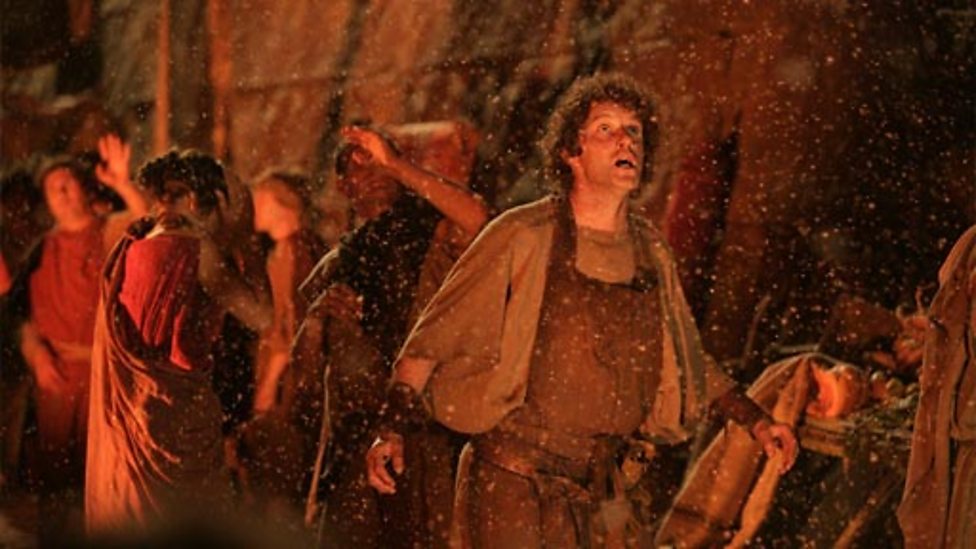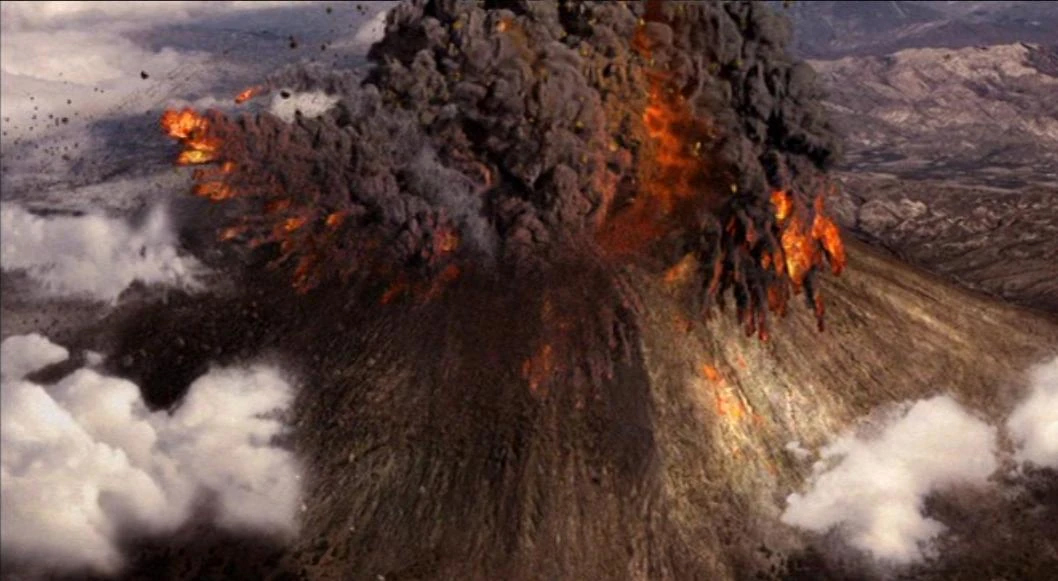The 2008 story ‘The Fires of Pompeii’ saw the Doctor and Donna Noble journey back to the first century A.D. But how historically accurate is the adventure?
‘The Fires of Pompeii,’ for those of you that don’t know, is a Series Four adventure set in 79 A.D. during the time of the Roman Empire. The Tenth Doctor and Donna Noble arrive in the famous Italian city which sits at the base of the mammoth Mount Vesuvius – a landmark which, to the contemporary Romans, is nothing more than a mountain, whereas it is in fact an active volcano.
And in ‘The Fires of Pompeii’ the Doctor rightly points out that, at this point in history, the Romans don’t even have the word ‘volcano.’ And while the episode implies that the Romans derived the name from the eruption of Mount Vesuvius, this probably wasn’t the case. Whilst some of Pompeii’s residents would indeed have worshipped the god Vulcan (the god of fire) and may have used the term ‘vulcano’ to describe Vesuvius’ eruption, it more likely derived from the Sicilian island of the same name, which was so-called because the Romans believed the place to be the chimney of the fire god.
And so, as previously mentioned, the residents of Pompeii would have had no idea of just how much danger they were in. But they would have had clues. ‘The Fires of Pompeii’ rightly references the frequent earthquakes that preceded the eruption in 79 A.D., and the city’s residents would have been quite used to these. Indeed, the city had been rocked by a significant earthquake in 62 A.D. which caused considerable damage to many of its buildings, and this event is name-checked in the episode.
‘The Fires of Pompeii’ also acknowledges just how blasé the citizens were about the tremors. Indeed, the character of Caecilius and his family even have set positions in their house which they routinely run to in order to prevent valuable furnishings from being broken.
It is tricky, however, to pinpoint exactly when ‘The Fires of Pompeii’ takes place. Although everyone agrees that the devastating eruption of Mount Vesuvius occurred in 79 A.D., historians are unsure as to the exact date. And when ‘The Fires of Pompeii’ aired in 2008, it was widely accepted that the eruption occurred on the 24th August (as the Doctor concurs) but more recent archaeological findings have revealed some Pompeiian graffiti which appears to be dated some two months after this.
And it is not just the graffiti which supports a later eruption date. Historians have also found autumnal fruits within Pompeii’s buried remains, adding weight to the theory that Mount Vesuvius didn’t blow up during the summer. Thus, the devastating events more likely occurred in the October of that year, possibly on the 24th or 25th.
And then there is the more morbid question of how many people, exactly, perished when Mount Vesuvius erupted. In ‘The Fires of Pompeii,’ the Doctor tells Donna that there are some 20,000 people who will be impacted by the event, and he’s not wrong; Vesuvius’ eruption was large-scale and engulfed a number of other Roman settlements, including the nearby Herculaneum. So the risk to life was great.
At the same time, it is unlikely that as many as 20,000 people died in the disaster. Although the eruption was sudden and unexpected (as shown in ‘The Fires of Pompeii’) the inhabitants would have had more time to escape than the episode suggests. The initial effects of the eruption would have been heat, collapsing buildings and showers of ash, but it may have taken up to a day for the larger pieces of volcanic waste to fall on the city, and for the temperature to reach lethal levels.
Indeed, many of Pompeii’s inhabitants would have had time to gather essentials and flee the city. Those most at risk would have been those who opted to stay behind, or those who had become trapped in collapsing buildings. There would also have been a danger to those who took refuge on the beach, and indeed Donna warns the inhabitants about this in the episode, urging them to go to hills instead.

So is ‘The Fires of Pompeii’ inaccurate in its portrayal of the eruption? Not necessarily. We see the Doctor and Donna tearing through the city in the immediate aftermath, and they are indeed being showered with plumes of ash. And whilst the Doctor returns to rescue Caecilius and his family, it is unlikely that they would have been cowering in a corner of their home as the episode shows. They most likely would have fled the city, assuming they could escape from their house.
None of this is to say that the death toll from Vesuvius’ eruption was insignificant. Although no one can be certain of the exact figure, the remains of over 1,500 people have been found in Pompeii and the nearby Herculaneum, with the total figure likely to be much higher.
And as ‘The Fires of Pompeii’ points out, the city and its ruins were quickly forgotten, leaving Pompeii buried and undiscovered for many hundreds of years. But that is not to say that it was instantly erased from memory; there is evidence to suggest that some contemporary ‘excavations’ were carried out at the site shortly after Pompeii was destroyed. Some of the ruins were discovered with markings which suggest that the site had already been dug by Roman thieves who were extracting riches from the remains.

Finally – just in case anyone’s wondering – there is little evidence to suggest that the Pyrovile were active in 79 A.D., or that Vesuvius was made to erupt by the last of the Time Lords. But we can’t rule it out.
How much does the historical accuracy of Doctor Who matter to you? And what is your favourite moment from ‘The Fires of Pompeii’? Let us know in the comments below.








Leave a Reply